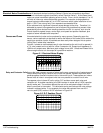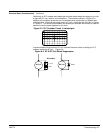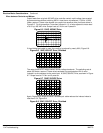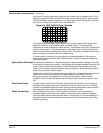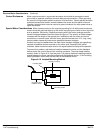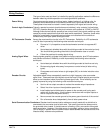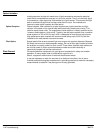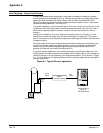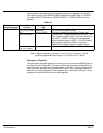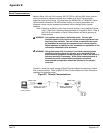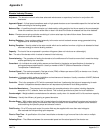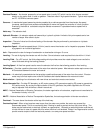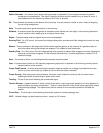
Appendix C
Appendix C-1MN770
Elevator Industry Glossary
Adjusters – The elevator mechanic who does advanced maintenance or supervisory functions in conjunction with
mechanics.
Approach Speed – A fixed speed sometimes used on high speed elevators as an intermediate speed for the last few feet
before switching to the leveling speed.
Balanced Car – A condition where the elevator car is balanced by adding weights into the car equal to the counterweight.
Under this condition, the car neither falls or rises in the shaft if the brake is released and the drive disabled.
Brake – Elevators use a spring set brake consisting of a drum acted upon by brake friction shoes. Some modern
elevators now have disc brakes.
Braking Resistors – Large resistors added externally to the motor control to absorb excess energy generated during
regeneration or overhauling loads.
Braking Transistor – Usually added to the motor control which can be switched on when a high bus is detected to bleed
off excess energy to external braking resistors.
Capacity – The load of the car expressed in pounds or kilograms (does not include car or cable weight).
Car
– The cab of the elevator which is raised or lowered in the hoist way.
Commissioning – The procedure of testing the elevator at all conditions and full loads to ensure that it meets the design
criteria specified by the consultant.
Consultant – An individual who aids building owners and architects in the design and specifications of elevators by
writing performance specifications. Usually a member of NAVTP (National Association of Vertical
Transportation Professionals).
Contract Speed – The maximum speed in Feet per minute (FPM) or Meters per second (M/S) an elevator runs. Usually
specified in the initial contract for the job.
Contractor – A company which performs installation and maintenance of elevators. Usually a member of NAEC (National
Association of Elevator Contractors).
Controller – This is the computer or PLC which commands the drives. It performing the logic and sequencing for each
elevator. It dispatches elevators based on call requests and provides for fault safety protection.
Controller Manufacturer – The company which engineers the complete elevator drive system including dispatcher,
computer or PLC, software, motor and control. This is usually provided as a panel for local installation.
Counterweight – Weight added to counterbalance the elevator, usually when it is loaded to 40% of its maximum capacity.
Efficiency – Usually the efficiency of gearing on geared elevators.
Elevator Room – With traction machines, this is located above the hoist ways and contains the motors and controls for
the elevators. With hydros, the elevator room may be located on the lowest floor, adjacent to the elevators
and containing the hydraulic pumps and elevator controls.
Field Forcing – On a DC motor and control, the motor field may be supplied with more than rated voltage to
over–saturate the field providing quick response.
Floor to Floor Time – A specification of the time it would take an elevator to go from one floor to the next or multiple
floors.
Following Error – The difference between the commanded speed and the actual speed of the elevator car.



